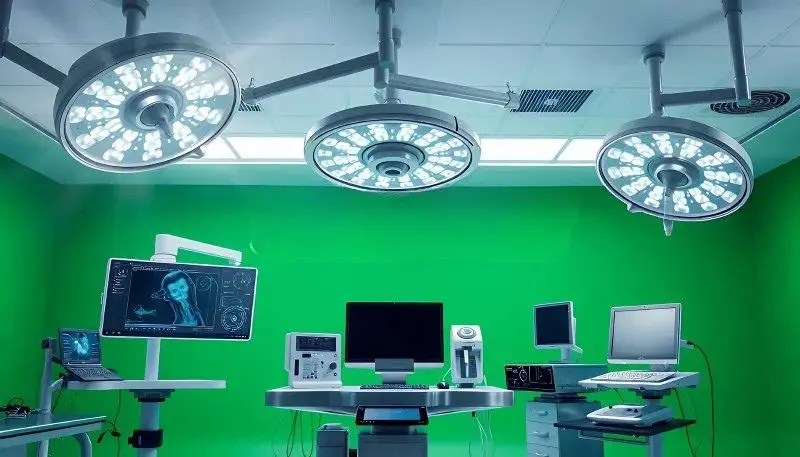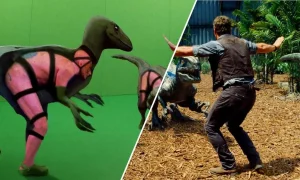In the medical education field, one of the most modern approaches that has changed teaching practices is the use of green screen technology. The film and television industry is not the only one that benefits from this innovative technology; now, medical technology educators are using green screens to create and deliver content in a better way.
Today, green screens are available to simulcast within anatomy labs, surgical rooms, or other 3D spaces. Their use allows visual storytelling. Through this form of narrative, it becomes easier to illustrate and explain complex ideas. Particularly important in matters as detailed as the human body, clinical procedures, or pathological conditions, green screens make lessons easier to follow and absorb.
Improving Medical Content Interaction Done Visually
Students can sometimes lose focus having to learn from the dense and technical topics covering medicine. Educators using green screen technology are able to integrate live action with dynamic visuals, which allows them to create animated presentations that grab learner’s attention. Instead of passively describing the functions of the heart, a lecturer can stand beside a 3D beating heart and interact with it in real time. This transforms the learning process into something far more engaging.
Visual aids enhance the speed of memorizing information. Teachers can use green screens to extend real-life images and add texts, labels, step-by-step explanations, and even zoom in on some tissues that are microscopic, which helps create vivid representations of medical concepts that are simple to understand. This serves as great help to visual learners.
Developing Simulated Medical Contexts
A noteworthy advantage of the use of green screens is to integrate instructors into various immersive scenarios. Students in medicine can be trained on how to manage an emergency room, operate in a surgical suite, or run an outpatient clinic—all without the need for expensive props or equipment. This is very useful for training in regions where accessing the physical structure is difficult, like during safety concerns like pandemics.
Students can observe in real time how professionals work through multiple role-play sessions involving patients, outlined steps, and supervised guidance. These environments can be recreated accurately, and through green screens, they can be quickly and flexibly adjusted for unbounded logistical frameworks.
Enhancing Distance Learning and Accessibility
The emergence of remote learning in medical education has created a need for digital materials. Lectures that are recorded through green screens can be accessed globally, making remote education more effective. For overseas students or those studying in institutions with little access to practical resources, such videos on core concepts are a blessing.
Also, subtitles, translated voiceovers, as well as images and videos can be added during the editing phase. This approach broadens accessibility for hearing- or learning-challenged students, as well as non-native speakers.
Affordable and Easily Scaled Teaching Aid
Producing content for medical training in real hospitals or even advanced simulation labs can be extremely expensive. In contrast, green screens are inexpensive and easy to scale. A simple green backdrop, basic lighting, and a good camera are all that is needed. Once set up, the potential is limitless.
Educators can compile a comprehensive video library of lectures, tutorials, patient interactions, and case studies. These can be reused or repurposed easily. This approach streamlines teaching while preserving material uniformity and demands less time and resources.
Building Soft Skills and Self-Assurance
Bedside manner and communication skills can also be enhanced using green screen videos. Educators can capture scenarios where students practice explaining a diagnosis and delivering challenging news. Watching themselves on screen allows them to adjust tone, posture, and delivery, which is crucial for developing confidence in real-life situations.
Challenges to Consider
As with any technology, green screen has its advantages and disadvantages. Because lighting is important, shadows or uneven lighting can detract from the chroma key effect. In either case, the educator has to control for video editing skills to at least prepare rough cuts of the material. Furthermore, balance is important since there is a tendency to overshoot with effects or animations, which works counter to the learning objective.
The application of green screen technology in medical education is not just for gimmicks; it is more of an intelligent and futuristic way of teaching. This gives educators the ability to visualize intricate ideas, develop comprehensive lessons, and cater to all types of learners. For the learners, the experience goes from static, rigid, and overly theoretical to active and hands-on.
As the field of medical education innovates with advancements in technology and responds to global shifts, tools like green screens are emerging as not only useful but indispensable. This technology can enhance the teaching of anatomy, emergency response, and patient interaction and elevate understanding for students in all disciplines.





